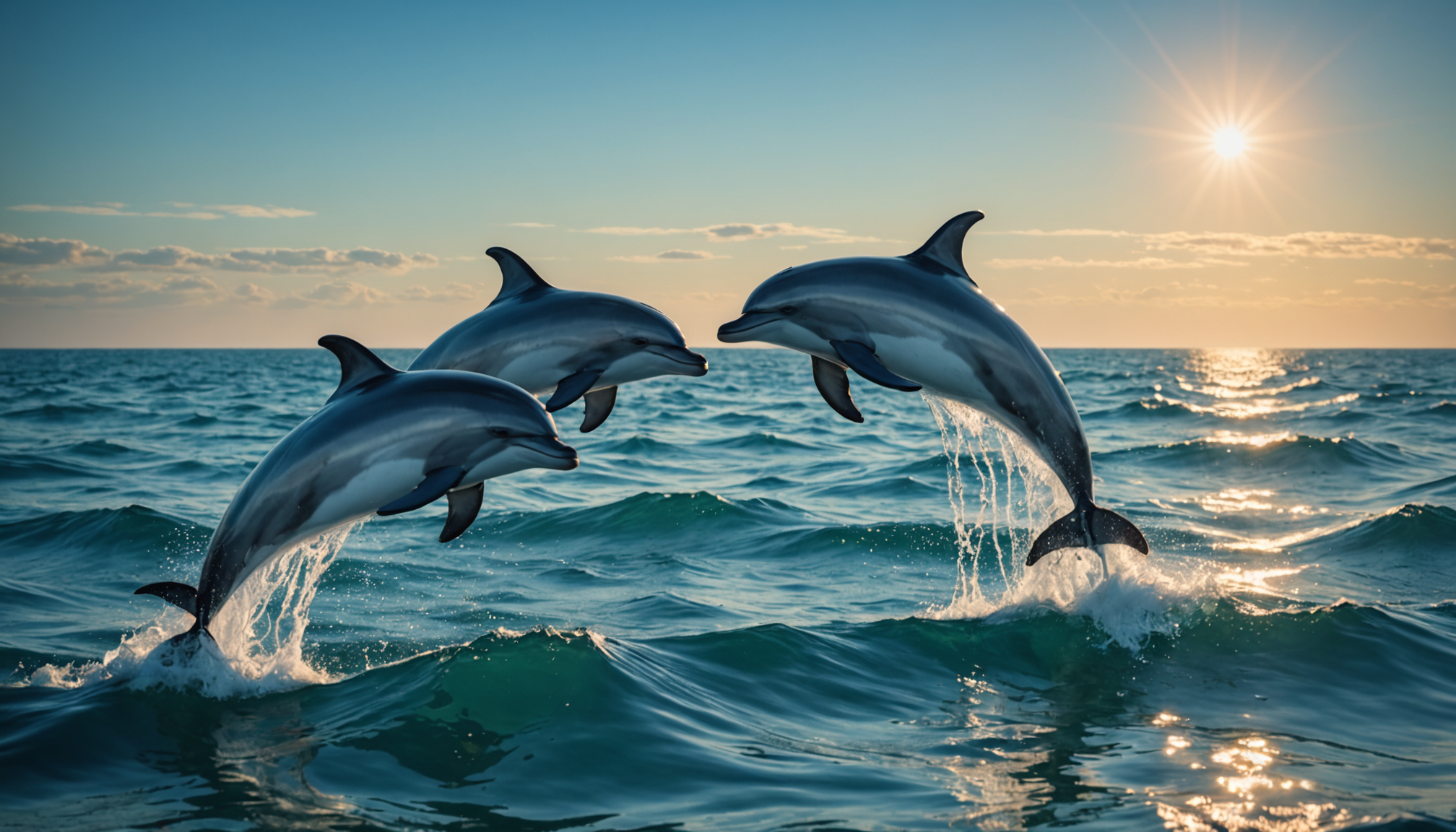
Report on Marine Pollution and Its Impact on Dolphin Populations in Brazil
Introduction
Marine pollution is often associated with visible contaminants such as oil slicks and plastic waste. However, recent research highlights the pervasive presence of invisible metals and toxins in ocean waters, posing significant threats to marine life. This report emphasizes the findings of a study conducted on stranded dolphins along the southeastern coast of Brazil, with a focus on the implications for Sustainable Development Goals (SDGs), particularly SDG 14 (Life Below Water) and SDG 3 (Good Health and Well-being).
Study Overview and Methodology
- Sample Collection:
- Tissues were analyzed from two dolphin species stranded over one year: Guiana dolphins (Sotalia guianensis) and franciscana dolphins (Pontoporia blainvillei).
- An unborn franciscana dolphin calf was sampled to investigate transplacental transfer of toxic metals.
- Analysis:
- Detection of metals including copper, zinc, arsenic, vanadium, mercury, cadmium, and molybdenum in dolphin tissues.
- Monitoring bioaccumulation patterns over time.
Key Findings
- Transplacental Transfer of Metals: Evidence confirmed that toxic metals such as mercury and arsenic cross the placenta, exposing unborn calves to harmful contaminants.
- Bioaccumulation: Older calves exhibited higher levels of cadmium, mercury, and molybdenum, indicating progressive accumulation of toxins with age.
- Essential vs. Toxic Metals: Copper and zinc, essential for growth, were found at elevated levels in fetal livers, suggesting active placental transport, while toxic metals increased through dietary uptake.
- Vanadium Detection: The presence of vanadium in dolphin fetuses points to previously unexplored risks in marine ecosystems.
- Geographical Dispersion: Ocean currents disperse contaminants broadly along the São Paulo coast, with localized cadmium spikes linked to industrial discharge.
Implications for Sustainable Development Goals
- SDG 14: Life Below Water
- Marine pollution threatens biodiversity, particularly endangered species like the franciscana dolphin.
- Contaminant exposure during critical developmental stages undermines population recovery and ecosystem health.
- SDG 3: Good Health and Well-being
- Dolphins serve as sentinel species, providing insights into environmental health risks that may also affect human communities reliant on coastal fisheries.
- Monitoring toxic metal exposure supports early-warning systems for ecosystem and public health.
- SDG 12: Responsible Consumption and Production
- Findings highlight the need for stricter regulation of industrial discharges and sustainable fishing practices to reduce pollutant loads.
Dolphins as Sentinel Species
Cetaceans, including dolphins, are ideal indicators of ocean health due to their air-breathing, nursing behaviors, and position at the top of the food web. Tracking toxin loads in these animals offers a comprehensive view of contaminant movement through marine ecosystems.
- Previous studies linked mercury in Atlantic bottlenose dolphins to neurodevelopmental delays in humans consuming similar seafood.
- The current research underscores the shared risks between marine wildlife and human populations, reinforcing the One Health approach.
Recommendations and Next Steps
- Policy and Conservation Measures
- Implement stricter catch limits for franciscana dolphins to protect vulnerable populations.
- Target cleanup efforts on heavy-industry outfalls to reduce localized contamination.
- Scientific Research
- Expand monitoring programs to include trace metals alongside persistent organic pollutants in marine mammals.
- Conduct long-term health studies incorporating hormone and immune function assays to assess reproductive and survival impacts.
- Investigate interactions between metal exposure and other environmental stressors such as ocean warming and noise pollution.
- Public Health Integration
- Use fetal metal markers as early-warning indicators for broader ecosystem and human health risks.
- Promote interdisciplinary collaboration between wildlife toxicology and public health surveillance systems.
Conclusion
The detection of toxic metals in unborn dolphins presents a critical conservation and public health concern. Addressing chemical exposures during prenatal development is essential to ensure effective rehabilitation and population recovery efforts. This study reinforces the importance of integrating environmental protection with sustainable development goals to safeguard marine biodiversity and human well-being.
References
- Study published in Science of The Total Environment.
- Collaboration with Brazil’s Beach Monitoring Project and São Paulo State University.
For further information and updates, subscribe to our newsletter and explore the EarthSnap app.
1. Sustainable Development Goals (SDGs) Addressed or Connected
- SDG 14: Life Below Water
- The article focuses on marine pollution, contamination of marine mammals, and ecosystem health, which are central to SDG 14.
- SDG 3: Good Health and Well-being
- Concerns about toxic metals affecting dolphin development and implications for human health through seafood consumption link to SDG 3.
- SDG 12: Responsible Consumption and Production
- The article discusses industrial pollution and the need for targeted cleanup, relevant to sustainable management of chemicals and waste.
- SDG 15: Life on Land
- Though focused on marine life, the article mentions ecosystem disruption and sentinel species, linking to broader biodiversity conservation goals.
2. Specific Targets Under Those SDGs
- SDG 14: Life Below Water
- Target 14.1: By 2025, prevent and significantly reduce marine pollution of all kinds, particularly from land-based activities, including marine debris and nutrient pollution.
- Target 14.2: Sustainably manage and protect marine and coastal ecosystems to avoid significant adverse impacts.
- SDG 3: Good Health and Well-being
- Target 3.9: Reduce the number of deaths and illnesses from hazardous chemicals and air, water, and soil pollution and contamination.
- SDG 12: Responsible Consumption and Production
- Target 12.4: Achieve environmentally sound management of chemicals and all wastes throughout their life cycle, in accordance with agreed international frameworks.
- SDG 15: Life on Land
- Target 15.5: Take urgent and significant action to reduce the degradation of natural habitats, halt the loss of biodiversity, and protect endangered species.
3. Indicators Mentioned or Implied to Measure Progress
- Marine Pollution Levels
- Concentration of metals such as copper, zinc, arsenic, vanadium, mercury, cadmium, and molybdenum in dolphin tissues and fetuses as bioindicators of marine pollution.
- Bioaccumulation Rates
- Measurement of progressive bioaccumulation of toxic metals in dolphins over time, indicating ongoing contamination.
- Population Health and Survival Rates
- Monitoring franciscana dolphin populations and calf survival rates as indicators of ecosystem health and impact of pollutants.
- Industrial Discharge Records
- Tracking cadmium spikes in dolphins linked to phosphate-fertilizer discharge as an indicator of industrial pollution impact.
- Public Health Surveillance
- Using dolphin toxin loads as sentinel indicators for human health risks related to seafood consumption.
4. Table: SDGs, Targets and Indicators
| SDGs | Targets | Indicators |
|---|---|---|
| SDG 14: Life Below Water |
|
|
| SDG 3: Good Health and Well-being |
|
|
| SDG 12: Responsible Consumption and Production |
|
|
| SDG 15: Life on Land |
|
|
Source: earth.com







